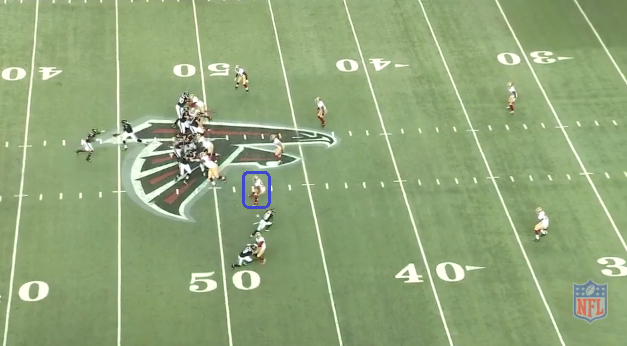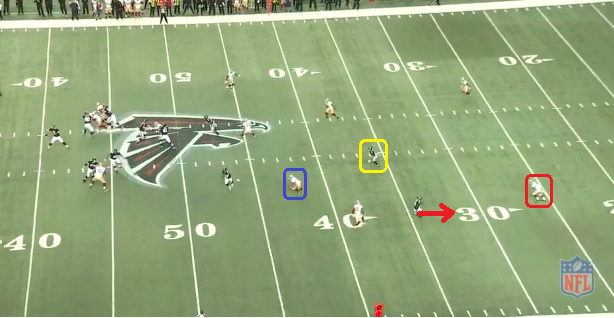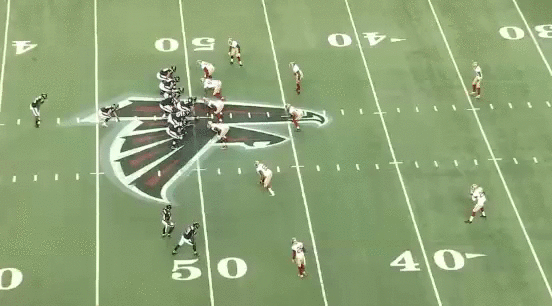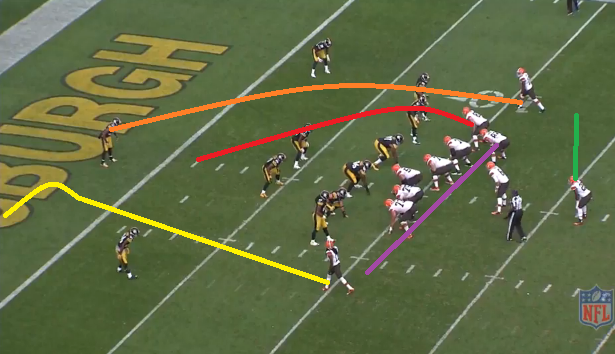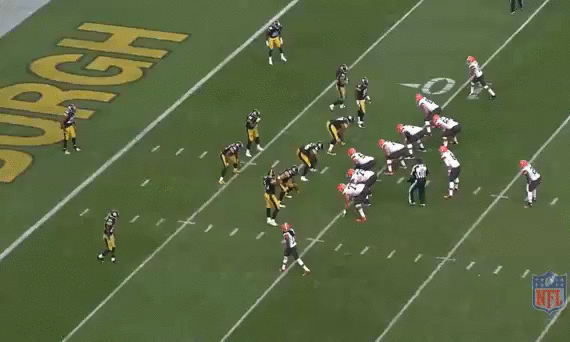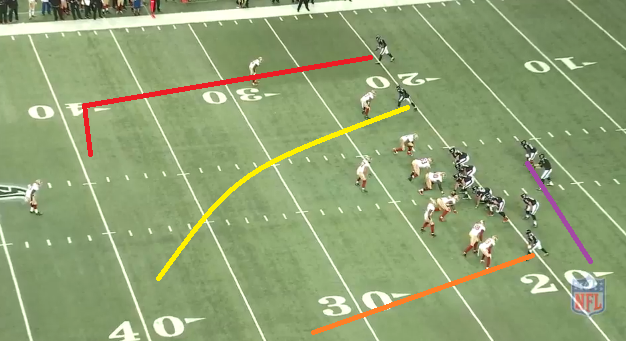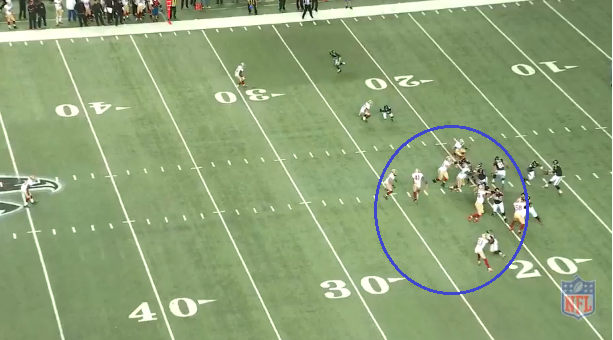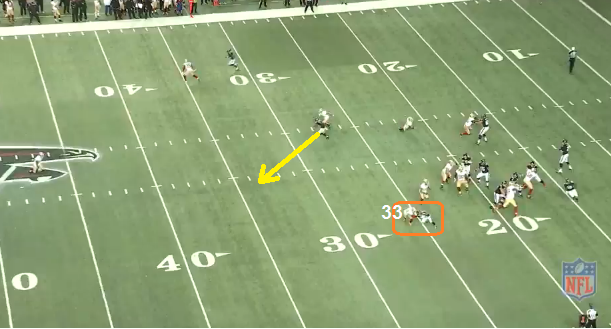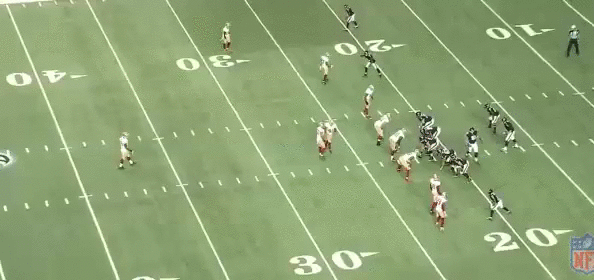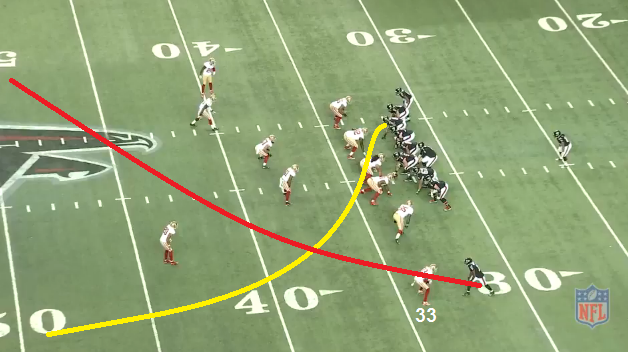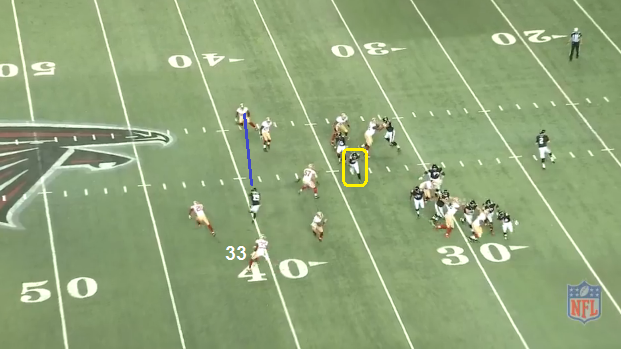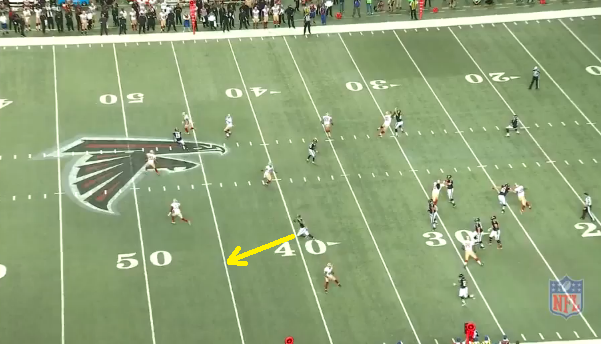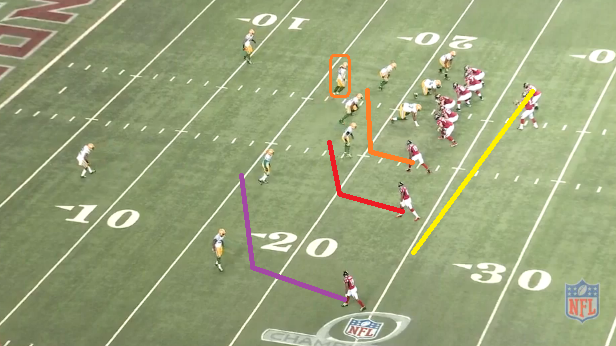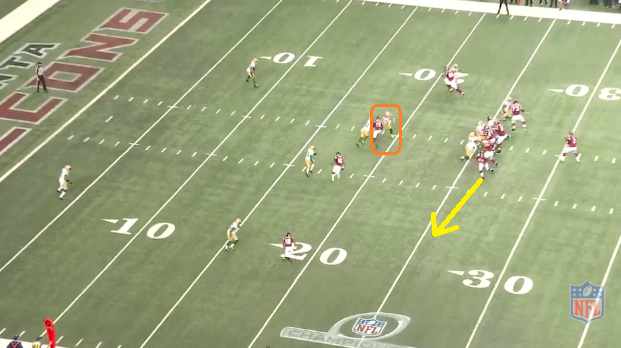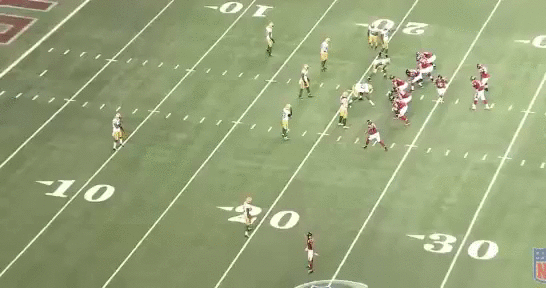Originally posted by Niners816:Nothing says "downhill" more than an I formation. The death of the split back formations imo coincided with the evolution of the slot WR, and the linebackers getting faster and faster. It used to be easier to run to the sidelines. Now linebackers are faster than some RBs, and way faster than OLmen. I believe it was Holmgren that saw this and put an end to the split back formations that Walsh used so often.
Originally posted by thl408:
Zone blocking adjusts to slants and last second shifts better than man/power blocking concepts. It's up to the OLmen to quickly think on the fly, but there are rules in place to allow for the adjustments to be made. Can shifts and slants screw up blocking assignments? Sure, if the OLmen aren't quick thinking, but not because zone blocking rules doesn't have a way to adjust.
A basic rule is if there is a DLman lined up across from the OLman, that OLman is considered 'covered'. If covered, block that DLman, simple. If the OLman is uncovered, combo block with an adjacent OLman to the playside. If the defense slants right after the snap, and the covered/uncovered designation changes, adjust accordingly. If the defense shifts right before the snap, then the adjustment is made immediately before the snap, without communication. That's where chemistry and familiarity comes in. Alex Gibbs was a proponent of running just outside zone and that's it. Nothing else. All to build cohesiveness and chemistry along the OL.
If you look at the changes formation wise elder Shanny did when going to Denver it's pretty apparent it had this OZ blocking scheme in mind. Our horizontal stacked forms (split, far, near) became more I based forms (strong and weak). I'd imagine this was so the back would be 7 yards of the LOS abs therefore have more time to read the defenders.
If you think about it, it a perfect marriage for a WCO passing attack. Not only do you have a run game exploiting the outside, but mostly all passing concepts have a similar outside flat attack. This emphasis on outside the numbers makes the defense compensate and this compensation opens up the down hill running and the drag/in cutting routes.
A horizontal running game does compliment a WCO passing game. When a defense over compensates one way, attach the other. All short range for that high percentage WCO stuff. Then the defense creeps up to compensate for the short range stuff, take a shot deep.



